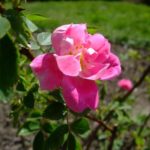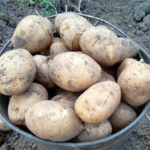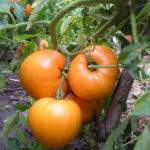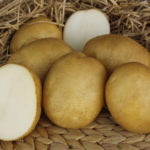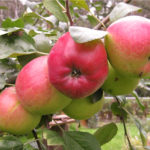Rose Ali Baba (Alibaba)
If you really sincerely love roses and own your own flower garden, then it probably has a couple of climbing varieties of this amazing plant. Or maybe you just have to choose those for your garden? Then be sure to pay attention to the variety with the magical name Ali Baba, which truly seems to have descended from the pages of a collection of oriental fairy tales.
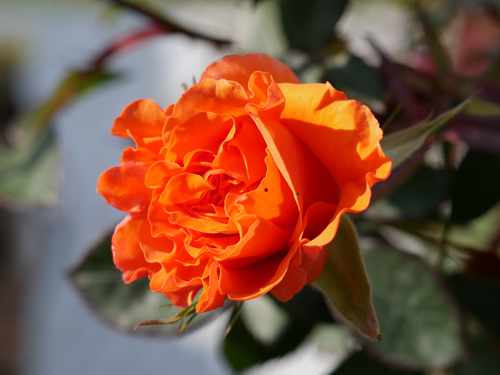
History of creation
The unusual culture of Alibaba was obtained according to some data - in 2006, according to others - in 2007 by breeder Christopher Warner. The origin of the variety is Great Britain. It has other names, but they are used less often than the main one: Schloss Bad Homburg, CHEwalibaba, Sunset Glow. For the short history of its existence, our heroine has received many awards. First of all, this is the title of "Gold Standard" awarded to the variety almost immediately after its appearance by two organizations simultaneously: the British Rose Breeders Association and the NIAB. A year later, the culture won the first prize of the competition in Lyon (France). There, the corresponding award was given to the magnificent aroma of the flowers of the noble plant. In Italy, at the 2011 La Tachita competition, our heroine was awarded the title of "Best climbing rose" and, again, was given the first prize. In 2014, the Ali Baba variety became the bronze winner of the competition in The Hague (Holland). In the same year, she was noticed in Japan, at the Gifu flower competition, where the culture also received a bronze medal.
Description
The plant with an oriental name is a representative of climbing large-flowered varieties. It belongs to the Climber group, which includes hybrids with the following distinctive features:
- the power of the bush;
- branchiness, rigidity, sufficient thickness and length of shoots;
- maximum height 4 meters;
- re-flowering (with the exception of some varieties).
As for our heroine directly, Alibaba is a vigorous crop, reaching a height of 0.2 - 0.25 meters, with flexible shoots, whose location, thanks to this feature, can be easily changed without fear of causing damage to the lashes. The bush may be a little more than a meter wide. The green leaves of the plant have a slight glossy sheen.
This hybrid has delightful flowers: large (up to 12 cm in diameter), double, cupped, salmon pink, with an admixture of coral, copper or apricot shades. Each flower is formed by wavy petals in the amount of 20-30 pieces. The shape of the unopened buds is goblet, the color is pink-orange. Flowers of this plant are collected in 4-5 pieces in small inflorescences. It must be said that not only the unique coloring of warm tones makes them attractive, but also the wonderful aroma: pronounced, fruity, with notes of passionfruit and apricot. Ali Baba belongs to the remontant species of roses, and therefore blooms profusely throughout the season almost continuously, until stable autumn cold weather.
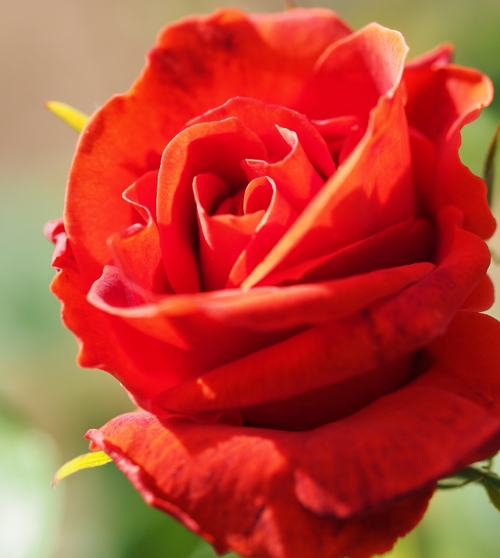
The features of the British variety are medium resistance to frost, high - to diseases, and, above all, to powdery mildew and black spot; very high - to precipitation. In the rain, even strong and prolonged, the buds do not droop.
Growing and care
The climbing beauty, originally from England, grows and develops well in diffused light conditions. She should be in direct sunlight only until noon, then the flower petals will not suffer from burns.
It is important to put Alibaba in the “right” soil, that is, matched to its needs. Rose prefers nutritious, loose soil. A planting hole for a seedling is dug to a depth and width of 0.5 meters, or even more if there is an unsuitable type of soil on the site and the need to replace it. It is advisable to mix the prepared substrate with humus to increase fertility. We must not forget about the drainage layer at the bottom of the hole in order to avoid stagnation of moisture in the soil under the future bush. The roots of the plant are straightened before planting, and the diseased and damaged ones are removed.At the end of the procedure, the seedling is watered, then after a while the soil around the decorative perennial is mulched with seed husks, peat or crushed tree bark.
In the first year of his life, Ali Baba requires frequent watering. In the future, the soil under the flower is moistened less often, but the amount of water poured out at a time under the culture is increased. Feeding the bush is needed only from the age of two or three. The frequency of this event is 4-5 times during the growing season. Organic matter, ash tincture, mineral complexes are used as fertilizers. It is optimal to apply both root and foliar feeding. But do not overdo it, so as not to reduce the frost resistance of the rose.
A few words about pruning. It consists in removing old shoots and preserving stems that are several years old. For a successful wintering, a beauty needs mulching with sawdust or dry foliage to a decent height.
Use cases
With the help of the Ali Baba variety, you can successfully decorate anything: wooden fences, forged fences, walls of buildings. Using various types of supports and resorting to the services of a climbing beauty with fragrant flowers in warm tones, it is easy to arrange a hedge, arch, pergola. A garden gazebo entwined with roses of this variety will turn out to be very romantic and even luxurious. If desired, low-growing flowering crops with buds of white, red, pink shades are planted in the neighborhood of the decorative perennial Alibaba.
